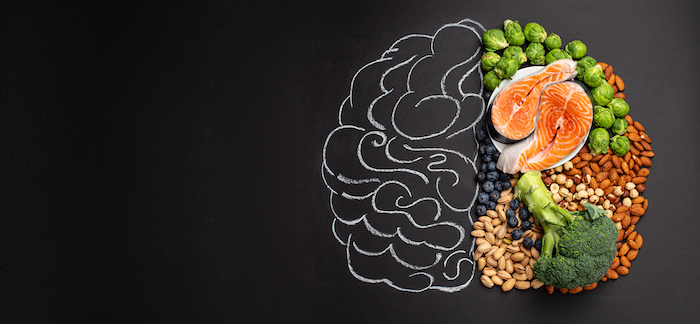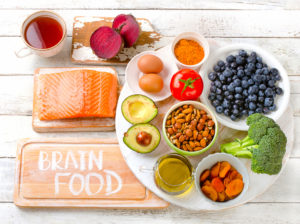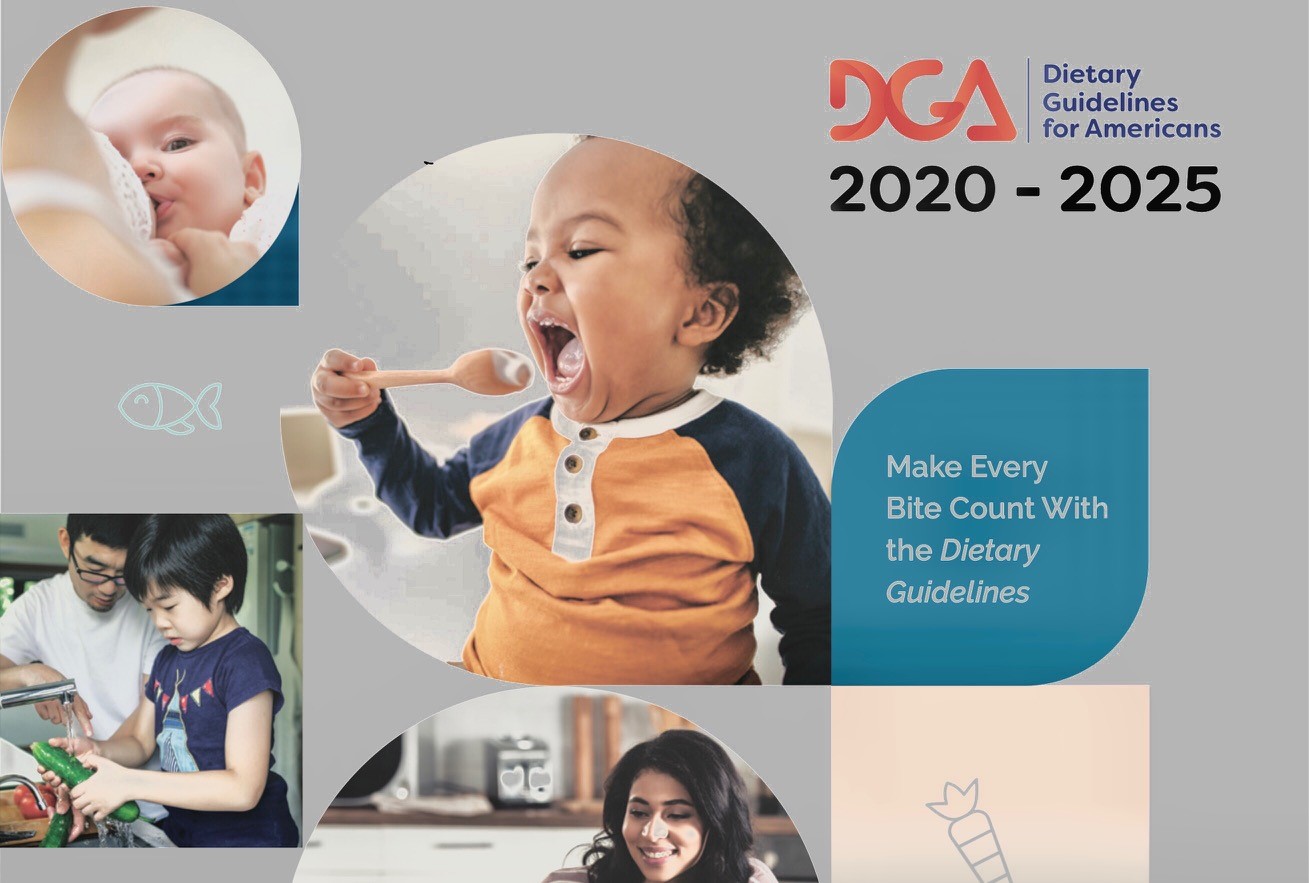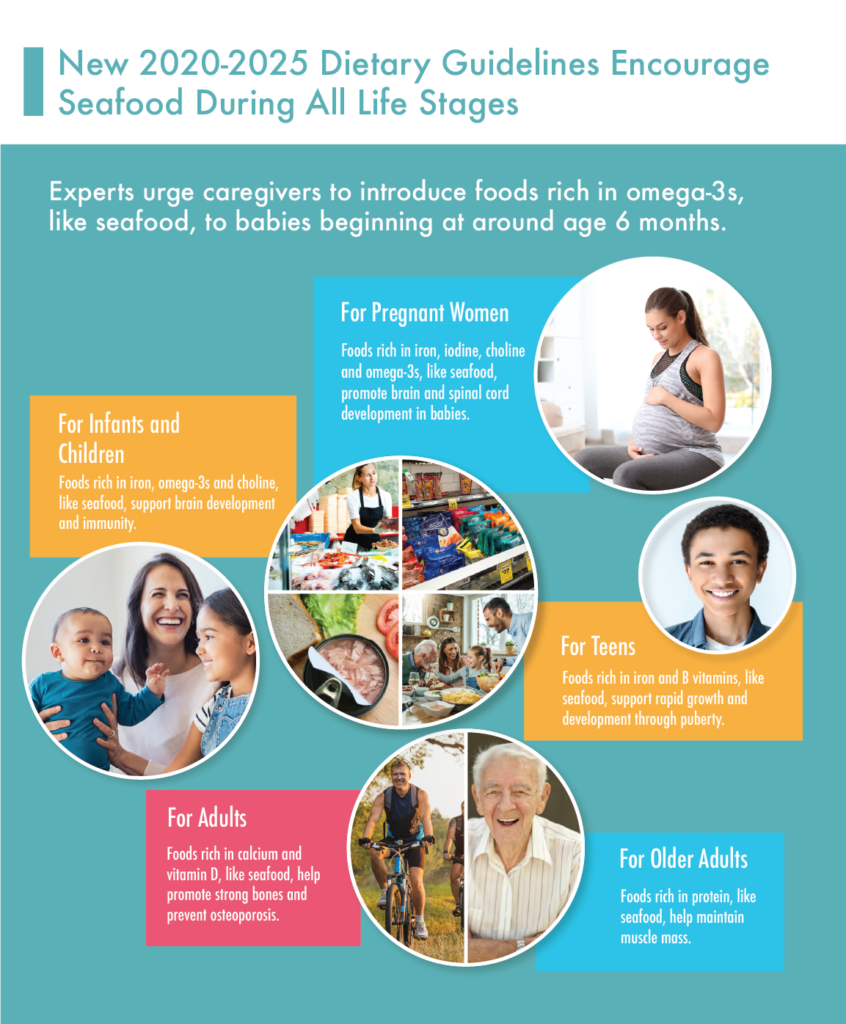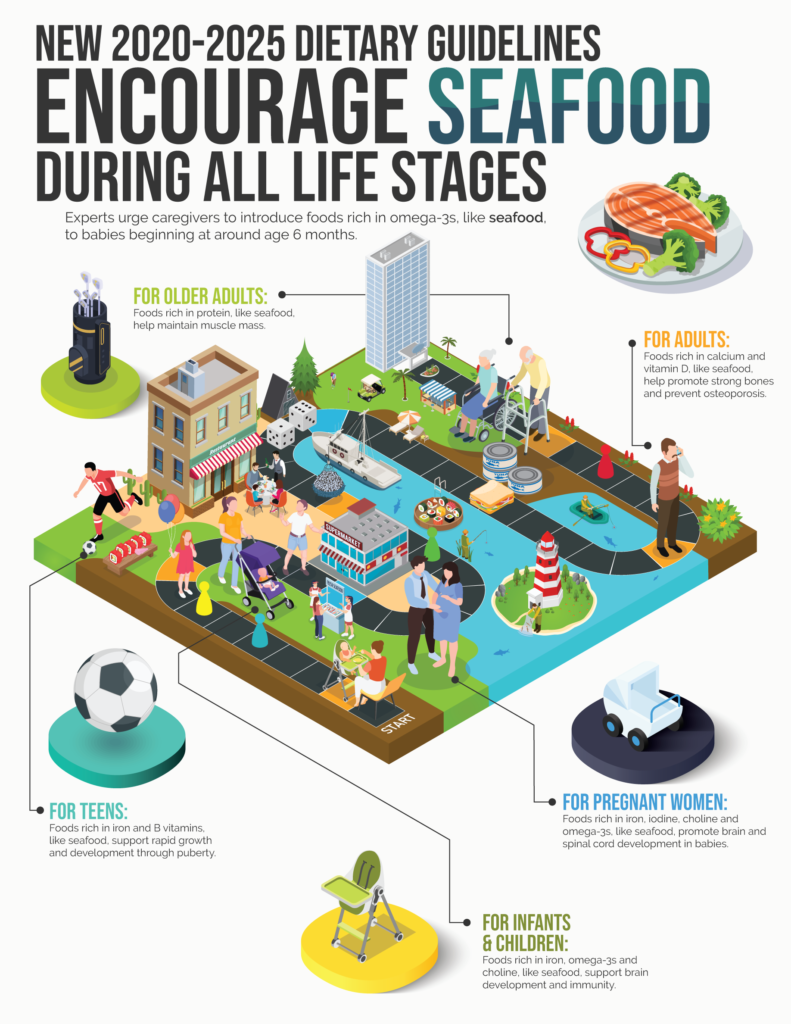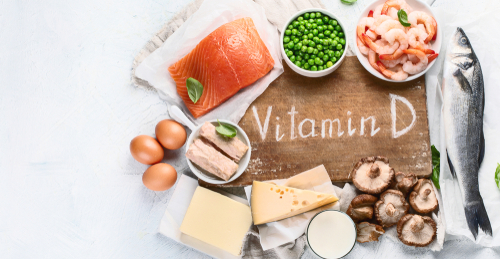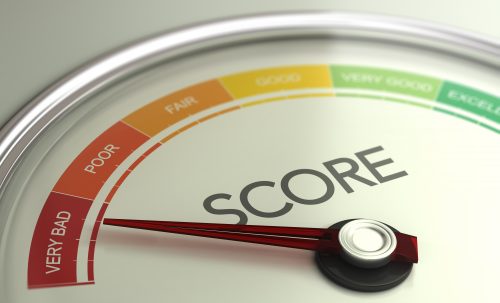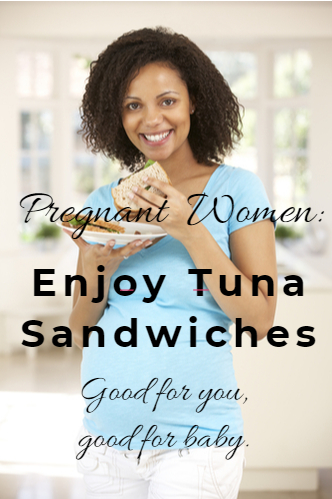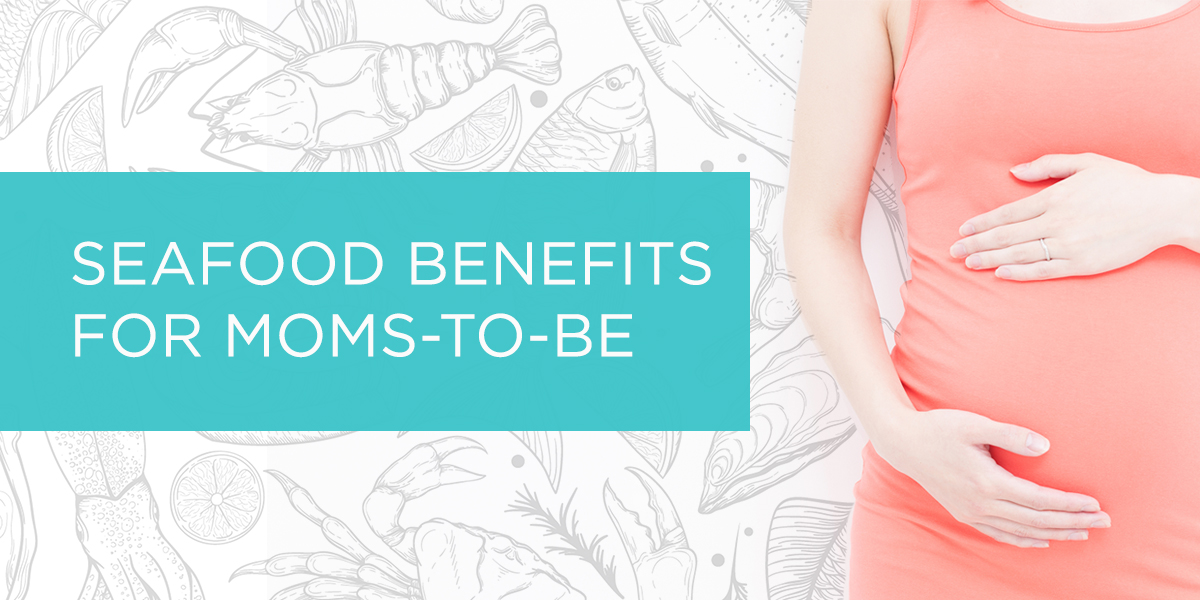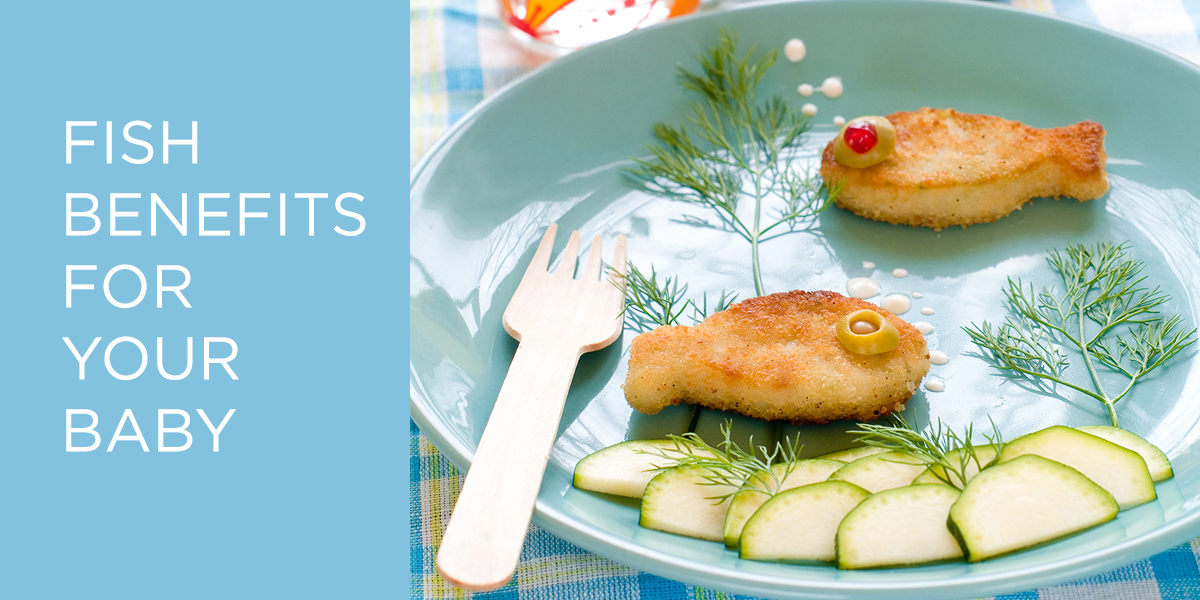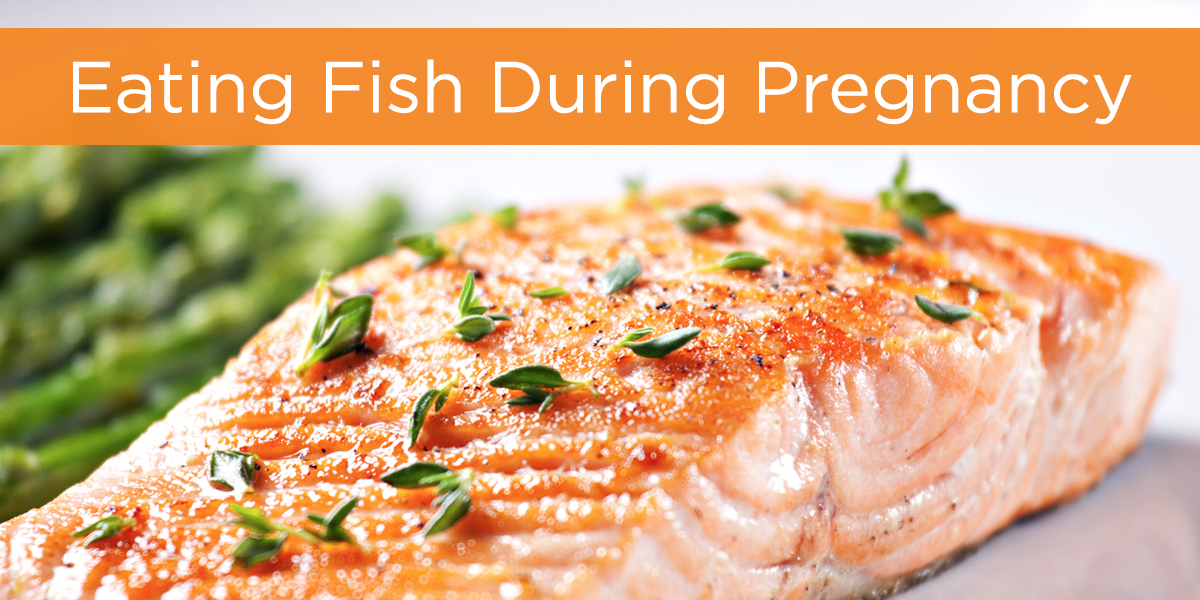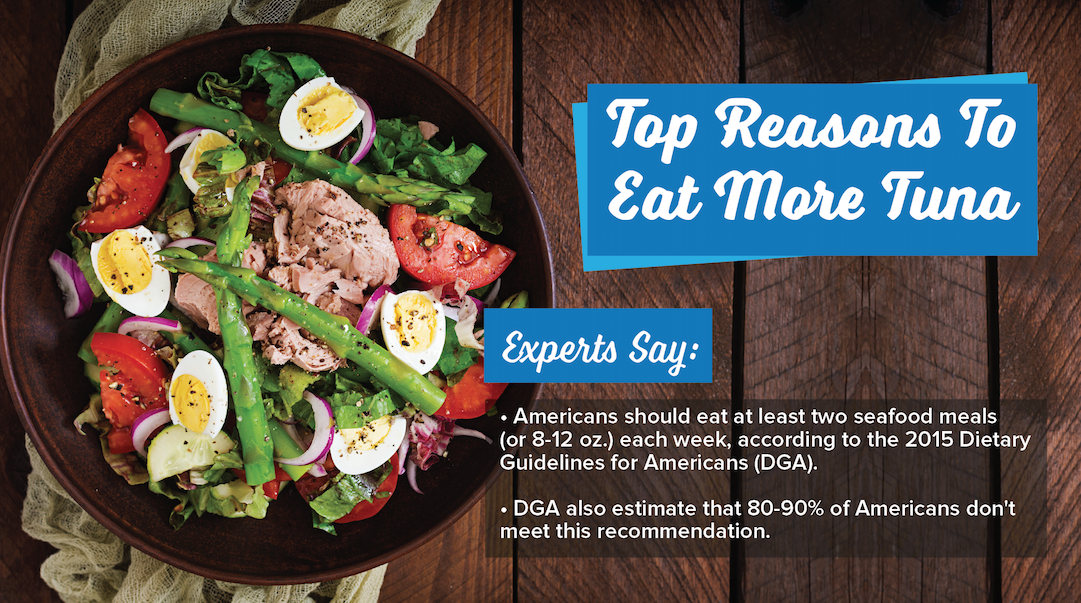All posts by NFI Nutrition
Include Seafood in Your Family’s Fall Meal Routine
The start of September sounds the dismissal bell on summer vacation and signals the beginning of back-to-school routines for kids and families. A new school year — especially during this unprecedented time — brings forth the opportunity for new routines that support the work students do inside and outside the classroom.
One way to support students in all their activities is to offer foods that nourish their bodies and brains.
And one of the foods that deserves an A when it comes to brain health is seafood. Fish and shellfish are among the only foods naturally rich in a type of omega-3 oil called DHA, which boosts brain development and function. Check out the Cognition Kitchen guide for more information on seafood and other brain-healthy foods.
Furthermore, the 2020-2025 Dietary Guidelines for Americans encourage families to eat seafood at least twice weekly because of its heart and weight benefits.
The Guidelines also underscore the importance for pregnant and breastfeeding women to eat more seafood to improve babies’ health.
The benefits from eating seafood start before we’re even born. Research shows that children of moms who eat seafood 2-3 times each week during pregnancy reach milestones – like climbing stairs, copying sounds and drinking from a cup — more quickly. And on the other end of the age spectrum, a recent study found that eating a seafood-rich diet may help protect against memory loss and dementia.
In addition to omega-3s, seafood also contains important nutrients, like iron and B vitamins, which help promote proper growth in children. Seafood also provides some vitamin D, a nutrient important for healthy bones, immunity and heart health.
Seafood is versatile and can be used in many family favorites.
Plus, offering seafood to your children helps them develop healthy eating habits early on. From breakfast and snacks to lunch and dinner, these three seafood recipes are sure to please even your pickiest eaters.
Start the new school year with the addition of seafood to your diet. A healthy diet that includes seafood will support you and your students and is sure to add some variety to your cookbook.
More information and recipes can be found via our Cognition Kitchen Guide or Dish on Fish.
Latest News
From Babies to Baby-Boomers: USDA’s New 2020-2025 Dietary Guidelines Say Start Seafood Early for a Lifetime of Benefits
The Dietary Guidelines for Americans (DGA) are really important—they inform what’s in school lunches; Women, Infants, and Children (WIC) food packages; and nutrition programs for older adults. The DGA are also really long: 164 pages to be exact. Because most Americans are not sifting through every page of the science-based guidance, we’re here to highlight the recommendations for a food that continues to pop up over and over again—seafood.
Seafood at Every Stage
The 2020-2025 DGA recommend eating seafood beginning at around age 6 months and continuing through all stages of life. Here are the latest recommendations about seafood for people of all ages:
- Eat a variety of cooked seafood 2-3 times each week during pregnancy. The 2020-2025 DGA continue to recommend seafood during pregnancy. When consumed regularly during pregnancy, the nutrients in fish and shellfish like iron, iodine, choline, and omega-3s can help support optimal baby brain development.
- Introduce seafood to babies around age 6 months. This is the first round of DGA highlighting nutrition needs for babies and toddlers under 2 years old. And, seafood stands out as an important food for this age group. Why? Because seafood provides critical nutrients that tend to be lacking in many infants’ diets, such as iron, omega-3s, and choline. Additionally, starting seafood early may help shape lifelong taste preferences, as well as healthful food choices.
- Eat seafood 2-3 times each week throughout adulthood. As we age seafood provides protein, calcium and vitamin D, which help strengthen bones and maintain muscle mass.
Americans Currently Don’t Eat Enough Seafood
A whopping 94% of children and 80% of adults currently do not meet the recommendation to eat seafood twice per week. In fact, a study estimates that low seafood intake is responsible for about 84,000 American lives lost to heart disease each year, which makes seafood deficiency the second-biggest dietary contributor to preventable deaths in the U.S. To help Americans reap the benefits of fish, USDA goes beyond sharing nutrition science to include easy-to-implement guidance about how to eat more fish. USDA recommends families start simple when working toward meeting the new Dietary Guidelines by merely keeping seafood on hand.
It’s Easy to Meet New DGA Seafood Recommendations
Here are some suggestions that make eating seafood 2-3 times each week simple:
- Keep shelf-stable fish—like canned or pouched tuna and salmon—in the pantry and always have seafood—like fish, shrimp, and scallops—in the freezer.
- Add fish and shellfish to family favorite dishes, like tuna to quesadillas or mac-n-cheese, shrimp in rice and pasta dishes, and pollock or cod to tacos.
- Make it Mediterranean a couple of times every week. Try swapping out meat and poultry sometimes for a seafood-based dish. Hamburgers become salmon or crab burgers and spaghetti with meat sauce becomes spaghetti with a tuna puttanesca sauce.
- Pick out one new seafood recipe to add to your weekly meal rotations and get kids involved in meal planning, prepping, and cooking. Studies show kids are more likely to try food when they contribute to the meal.
NFI Seafood Nutrition Resources
For more family-friendly and delicious recipes and tips to help your clients, patients. or followers get more seafood on their table, check out these resources below.
- “Everyday Seafood,” our FREE Dish on Fish e-cookbook with 50+ easy seafood recipes.
- The Pregnant Woman’s Guide to Eating Seafood, our colorful and user-friendly guide that provides science-based information on choosing and eating seafood during pregnancy.
- AboutSeafood, our nutrition-focused YouTube channel featuring interviews with experts.
Latest News
Vitamin D Foods: Seafood, and Your Immune System
New Report Reaffirms Seafood’s Important Role in the Diet
The 2020 Dietary Guidelines Advisory Committee recently put out a Scientific Report reaffirming the well-established, lifelong benefits of eating seafood—from boosting brain and eye development in babies to supporting heart and brain function and a healthy weight for adults. But, what about vitamin D foods?
Most people know that seafood is good for them (even if they don’t eat the recommended 8-12 ounces or 2-3 servings weekly), but much of the attention understandably focuses on the powerhouse omega-3 oils found in fish, which are especially important for pregnant mothers and their children.
Vitamin D Foods: Seafood is a Rare Natural Source of it
Less widely touted: seafood is one of the few natural sources of vitamin D. The 2020 Dietary Guidelines Advisory Committee’s Scientific Report designates vitamin D as a “nutrient of public health concern” because nearly all Americans—94 percent—aren’t getting enough of it. While your body synthesizes vitamin D with the help of sunlight, there are many reasons why some people may be deficient. Individuals who have dark skin, malabsorption issues, are older or live north of Atlanta, GA during the winter months are more likely to be vitamin D deficient.
In addition to sun exposure, we can get vitamin D through the diet. Some foods are “fortified” with vitamin D, meaning it is added during processing. But, some seafood—like salmon, trout and tuna—offer natural levels of vitamin D that may be higher than fortified foods, like cereal.
Why are Vitamin D Foods so Important?
Vitamin D works with calcium to strengthen bones and enamel. The Committee’s Scientific Report also highlights research showing vitamin D and calcium may work together to reduce the risk of high blood pressure during pregnancy and preterm birth.
Vitamin D and Immunity
There is also emerging science that vitamin D plays a critical role in your immune system.
In fact, a lack of vitamin D is associated with increased susceptibility to infection, as summarized in The BMJ (British Medical Journal) in April:
- “One factor that affects immune responses with increased age is reduced serum levels of 25-hydroxyvitamin D (25(OH)D), the biomarker used to assess risk of vitamin D deficiency and suboptimal dietary intakes. The seasonality of many viral infections, especially in cold weather in winter, is associated with low 25(OH)D concentrations as a result of limited exposure to sunlight. The metabolism and actions of vitamin D are well known. Vitamin D3 is produced in the skin and plays a key role in the immune systems, the highly complex mechanisms in the body that are designed to help protect people against a host of infectious agents, including bacteria and viruses. People who are self-isolating or unable to go outside into the sunshine, people living in regions impacted by air pollution, people who are malnourished, overweight or obese and those with low baseline 25(OH)D concentrations are likely to have weakened immune systems and functions and be at increased risk of viral infections.”
Vitamin D and Covid-19
Recently, researchers have focused on whether vitamin D plays a role in people’s susceptibility to the novel coronavirus.
- The Mayo Clinic summarized a University of Chicago study of 489 people which “found that those who had a vitamin D deficiency were more likely to test positive for the virus that causes COVID-19 than people who had normal levels of vitamin D.” Another study observed “high rates of vitamin D deficiency in people with COVID-19 who experienced acute respiratory failure.”
- A Boston University School of Medicine study published in PLOS One reported similar findings:
- “Hospitalized COVID-19 patients who were vitamin D sufficient, with a blood level of 25-hydroxyvitamin D of at least 30 ng/mL (a measure of vitamin D status), had a significant decreased risk for adverse clinical outcomes including becoming unconscious, hypoxia (body starved for oxygen) and death. In addition, they had lower blood levels of an inflammatory marker (C-reactive protein) and higher blood levels of lymphocytes (a type of immune cell to help fight infection).”
- ‘This study provides direct evidence that vitamin D sufficiency can reduce the complications, including the cytokine storm (release of too many proteins into the blood too quickly) and ultimately death from COVID-19,’ explained corresponding author Michael F. Holick, PhD, MD, professor of medicine, physiology and biophysics and molecular medicine.”
USA Today notes that although the exact role of vitamin D in immune response is still being determined, it is thought to help turn on certain genes on “to become more efficient at killing pathogens.”
USDA: Adequate Intake of all Nutrients, including Vitamin D
The Advisory Committee’s Scientific Report takes an “all of the above” approach to encouraging adequate intakes of all nutrients, including vitamin D. If you’re looking to get more vitamin D through diet, eating seafood is a no-brainer. Plus, seafood boasts other important nutrients that help reduce inflammation and support a healthy immune system, like protein, omega-3s, vitamins and B, iron, zinc and selenium. It’s no wonder that experts recommend Americans include fish more often as a source of protein on their plates.
It’s also important to remember that a healthy immune system will not prevent a person from getting Covid-19. The CDC recommends wearing a mask, proper handwashing, social distancing and other measures needed to help stop the spread of the virus.
Latest News
HuffPo’s Latest No-No
In the Huffington Post, a freelance journalist and “brand strategist” offers advice on buying and eating canned tuna which, she says, is “especially relevant…in the age of the coronavirus pandemic’s shelter-in-place mandates.”
Canned tuna has always been a widely available, affordable, and nutrient-packed pantry staple, but given the unique stakes of the moment, it’s even more important than ever that people purporting to offer the public advice that could impact their health do so in a responsible way.
Unfortunately, this piece falls short in a number of areas. Here are the most important:
-
- The piece misstates government advice on how much seafood you should eat. She quotes a source claiming government experts recommend limiting tuna consumption to six ounces a week. That’s simply false. According to government guidelines, there are no seafood species off-limits to the general U.S. population. In fact, the USDA’s Dietary Guidelines for Americans actually recommend eating at least 8-12 ounces (or 2-3 meals) of a variety of seafood each week, and this includes canned tuna.
-
- It puts the pregnant women—and their babies—at risk by not focusing on science-based recommendations. No sooner does the author misrepresent government advice than she recommends ignoring it all together, in favor of the unqualified and unscientific recommendations of an activist group with an ideological agenda. Even worse, she’s talking specifically to pregnant women, the group that can least afford to outsource decisions that could impact their children’s health to fringe agitators. In the FDA’s official guidance to pregnant women about eating seafood, it lists canned light tuna as a “best choice” and canned white (albacore) tuna and yellowtail tuna as a “good choice.”
-
- It pushes gimmick brands using myths to scare consumers. The piece recommends consumers worried about mercury buy from “Safe Catch,” a brand premised on the evidence-free assertion that other canned tunas are unsafe. We’ve warned about their tactics before, and consumers shouldn’t get fooled. Safe Catch sells a solution in search of a problem, for a hefty price-tag at a time when many Americans are struggling financially.
-
- It gives an incomplete story on the nutrition of different kinds of canned and pouched tuna. In repeating the flawed premises of the Safe Catch crowd, the piece ignores some of the nutritional punch that makes other commonly available forms of shelf-stable tuna desirable. For instance, the author never mentions that albacore tuna, which she implies you should avoid because of a higher mercury content (which is still far below the FDA’s threshold for mercury in food), is also higher in omega-3 fatty acids critical to heart, brain, and immune health.
-
- It makes a public health crisis worse, not better. While the article seems premised on encouraging readers to eat more seafood, the author’s bottom line recommendation—that people limit their consumption to “one can a week”—is well below the scientific and nutritional consensus. In fact, a comprehensive study that considered both the positive health benefits in fish (like omega-3 fatty acids and protein) as well as the theoretical risks (like mercury) overwhelming found the net effect of eating tuna is positive. In fact, the study found pregnant women could eat 164 ounces of canned light tuna per week and 56 ounces of canned albacore tuna per week without any adverse effects. The suggestion that all Americans should limit tuna to 1 can (4 ounces) per week is wholly irresponsible.
Americans already eat dangerously little seafood. Articles like this, that dwell on what to limit and avoid – with no scientific basis – are not going to make that better.
Readers looking for a straight-shooting guide on why canned and pouched tuna is a critical addition to your 2020 pantry should look beyond the Huffington Post. Here’s a good place to start: Everything You Need to Know About Canned Tuna Nutrition.
Latest News
Can Pregnant Women Eat Tuna?
Can Pregnant Women Eat Tuna?
 “Can I eat tuna when I’m pregnant?” is one of the most commonly asked questions by expecting mothers. The short answer: yes. The longer answer: Not only can women eat a variety of seafood—including canned light and white tuna—during pregnancy, but they absolutely should be eating tuna during pregnancy. Missing out on seafood during pregnancy could mean missing out on important nutrients, like omega-3s.
“Can I eat tuna when I’m pregnant?” is one of the most commonly asked questions by expecting mothers. The short answer: yes. The longer answer: Not only can women eat a variety of seafood—including canned light and white tuna—during pregnancy, but they absolutely should be eating tuna during pregnancy. Missing out on seafood during pregnancy could mean missing out on important nutrients, like omega-3s.
Why Should Pregnant Women Eat Seafood Like Tuna?
Tuna is one of the best sources out there for a healthy fat called omega-3 DHA. Simply put, omega-3 DHA is crucial to baby’s brain and eye development. But that’s not all. Tuna and other seafood are also high in protein, calcium, vitamin D and iron, which help build strong bones and muscles for mother and baby alike.
What Are The Best Kinds of Fish to Eat During Pregnancy?
Canned and pouched tuna are among the top three most popular types of fish in America. That includes both “light” tuna, sometimes called skipjack, and chunk “white” tuna or albacore. Actually, all of the top ten most popular seafood choices among Americans are safe and healthy for expecting mothers. These include widely available options like shrimp, salmon, crab and catfish.
How Much Tuna Should Pregnant Women Eat?
The Dietary Guidelines for Americans (DGA) recommend eating 2-3 servings of a variety of seafood every week. That’s about 8-12 ounces each week. If that sounds like more than you’re currently eating, the reality is that it probably is. Research shows that most Americans are eating a less than optimal amount of fish. Pregnant women in the U.S. eat less than 2 ounces of seafood weekly. Canned and pouched tuna is a great seafood option because it is an incredibly versatile pantry staple.
Are There Any Kinds of Fish Pregnant Women Should Avoid?
There are only a small number of species of fish that pregnant women should stay away from because of higher mercury levels. They include shark, swordfish, king mackerel, tilefish, marlin and orange roughy. Most people rarely or never eat these kinds of fish anyway. Moms-to-be should also steer clear of a large species of tuna called bigeye, commonly found in sushi.
Oh Yeah, What about Sushi During Pregnancy?
Sushi is generally safe to eat during pregnancy as long as it’s made from vegetables and/or cooked seafood. To reduce your risk of getting sick from food during pregnancy, do not eat any raw meats or raw seafood during pregnancy.
What Besides Seafood Should I Be Eating While Pregnant?
Of course, fish is just one—very important—piece of the pregnancy puzzle. The Dietary Guidelines recommend that pregnant and breastfeeding women eat a nutrient-rich diet filled with a variety of whole foods like seafood, vegetables, fruits and whole grains. For more information on how seafood fits into an overall healthy diet for mom and baby, read What To Eat When Pregnant, or The Pregnant Woman’s Guide To Eating Seafood, or visit fishduringpregnancy.com.
Latest News
Seafood Benefits for Mom
Moms-to-Be: Are You Eating Enough Seafood?
The U.S. Food and Drug Administration (FDA) estimates that pregnant women in the U.S. eat less than half a serving of seafood a week. That means most moms-to-be should quadruple the amount of seafood they eat each week to meet the minimum 2 servings recommendation.
Prevent Depression During and After Pregnancy:
Research shows women who eat no seafood during pregnancy are twice as likely to experience depression as those who eat seafood two times a week.i Studies suggest that depressed women have lowered levels of DHA, an important omega-3 found in fish. During pregnancy your developing baby needs a lot of DHA, thus depleting your levels of DHA. To get more DHA, try eating more seafood. ii,iii
Reduce Your Risk of Heart Disease:
Keep your heart healthy by eating seafood. Heart disease is the number one cause of death in women in the U.S., with risk factors including diabetes, high blood cholesterol and being overweight.
The good news is that you have the power to help manage your risk factors and protect your heart by including more fish, rich in omega-3 fatty acids, into your diet. Deficiencies in omega-3s are known to increase the risk of dying from heart disease by 36 percent.iv Nutrients found in seafood also decrease blood triglyceride levels and increases HDL (good) cholesterol. v
i</sup >Golding, Jean, et al. “High levels of depressive symptoms in pregnancy with low omega-3 fatty acid intake from fish.” Epidemiology 20 (2009): 598-603.
ii Golding, Jean, et al. “High levels of depressive symptoms in pregnancy with low omega-3 fatty acid intake from fish.” Epidemiology 20 (2009): 598-603.
iii Leung, Brenda and Bonnie Kaplan. “Perinatal Depression: Prevalence, Risks, and the Nutrition Link – A Review of the Literature.” The Journal of the American Dietetic Association 109 (2009): 1566-75.
iv Horn, L. V., PhD, RD., McCoin, M., MPH, RD., Kris-Etherton, P. M., PhD, RD., Burke, F., MS, RD.,Carson, J. A. S., PhD, RD., Champagne, C. M., PhD, RD., Sikand, G., MA, RD. (2008, February). The Evidence for Dietary Prevention and Treatment of Cardiovascular Disease. Journal of the American Dietetic Association, 108(2).
v Horn, L. V., PhD, RD., McCoin, M., MPH, RD., Kris-Etherton, P. M., PhD, RD., Burke, F., MS, RD.,Carson, J. A. S., PhD, RD., Champagne, C. M., PhD, RD., Sikand, G., MA, RD. (2008, February). The Evidence for Dietary Prevention and Treatment of Cardiovascular Disease. Journal of the American Dietetic Association, 108(2).
Seafood and Pregnancy Resources:
- Learn the do’s and don’ts of Eating Seafood While Pregnant

- Download our free 15-page “The Pregnant Woman’s Guide to Eating Seafood” on your computer, phone, or print it out for easy reference for tasty seafood/fish recipes.
- Save the Seafood Tips Bookmark
Latest News
Fish during pregnancy helps babies meet milestones

Last night my roommate Sarah cooked a wonderfully creative dinner for Lloyd and I and a handful of other friends. The entre was a reci-free version of oven-steamed salmon over veggies. You can see she simply placed the food in a pan over a dish of water sprinkled with ginger. Atop the salmon is teriyaki sauce and limes. It was so flavorful.
Speaking of seafood super high in omega-3s, today Harvard Medical School released the results of a new study that looked at the effects of eating fish during pregnancy on over 25,000 babies. The results of this HUGE study add to the growing body of evidence that moms-to-be who eat the most fish have babies with the best physical and mental development. This particular study gave babies scores based on achievement of milestones – like looking in the direction of sounds, crawling, and putting words together. Compared with women who ate the least fish, women with the highest fish intake (2 ounces per day on average) had children 25% more likely to have higher developmental scores at 6 months and almost 30% more likely to have higher scores at 18 months.
Latest News
Eating Fish While Pregnant – Fish Benefits for Baby
Is Your Baby Getting the Right Nutrients?
During pregnancy, you have at least three chances everyday to boost your baby’s health. A recent study found that moms-to-be who ate fish 2 to 3 times a week during pregnancy had babies who reached milestones such as imitating sound, recognizing family and drinking from a cup, more quickly.vi
- At 6 months children of mother’s who ate fish during pregnancy are more likely to sit unsupported and crawl than children of mothers who did not eat fish during pregnancy
- At 9 months children of mothers who ate fish during pregnancy are more likely to be able to climb stairs, drink from a cup, write or draw and put 2 words together than children of mother’s who did not eat fish during pregnancy
Help Your Baby’s Brain Develop:
Omega-3s found in seafood, such as tuna, make up a major part of the brain. So when pregnant and breastfeeding moms eat seafood, it provides an important foundation for their baby’s brain to develop normally. The 2010 Dietary Guidelines for Americans recommend that pregnant and breastfeeding moms should eat at least 8 ounces of seafood – that’s two servings – per week to help their baby’s eyes and brain develop.
Increase Omega-3s for Better Eyesight:
Studies also suggest that not having enough DHA, an important omega-3 found in seafood such as tuna, during pregnancy can have a negative effect on a baby’s eye development. Research from the Child and Family Research Institute suggests that women who eat a lot of meat but little fish can be deficient in omega-3s, and their babies did not do as well on eye tests as babies from mothers got plenty of this important nutrient.vii
Help Your Baby Get a Good Night’s Sleep:
Eating seafood increases the amount of essential omega-3s in a mother’s breast milk, which helps nourish developing babies. One study found that babies of mothers with higher DHA levels during pregnancy showed significantly quieter and less active sleep, and less sleep-wake transition than those of mothers with lower DHA levels. In other words, they slept better.viii
Eat Seafood During Breastfeeding for More Benefits:
Eating seafood increases the amount of essential omega-3s in a mother’s breast milk, which helps nourish developing babies. Studies show that children who are breastfed tend to have better eyesight, higher IQ scores and do better in school. These benefits may be due to the high level of omega-3s in breast milk.ix
Did You Know? More than 200,000 women die from heart attacks every year—five times the number of women who die from breast cancer.
vi The American Journal of Clinical Nutrition. Associations of maternal fish intake during pregnancy and breastfeeding duration with attainment of developmental milestones in early childhood: a study from the Danish National Birth Cohort. Available at:http://www.ajcn.org/content/88/3/789.abstract. Accessed March 5, 2012.
vii The American Journal of Nutrition. Essential n–3 fatty acids in pregnant women and early visual acuity maturation in term infants. Available at: http://www.ajcn.org/content/87/3/548.full?sid=5e4016a6-830a-4856-a5e4-5e3ea7bd1622. Accessed March 5, 2012.
viii PubMed. Maternal consumption of a DHA-containing functional food benefits infant sleep patterning: An early neurodevelopmental measure. Available at: http://www.ncbi.nlm.nih.gov/pubmed?term=3.Maternal consumption of a DHA-containing functional food benefits infant sleep patterning: An early neurodevelopmental measure. Early Human Development. Accessed March 5, 2012.
ix The American Journal of Clinical Nutrition. Associations of maternal fish intake during pregnancy and breastfeeding duration with attainment of developmental milestones in early childhood: a study from the Danish National Birth Cohort. Available at:http://www.ajcn.org/content/88/3/789.abstract. Accessed March 5, 2012.
Seafood and Pregnancy Resources:
- Learn the do’s and don’ts of Eating Seafood While Pregnant

- Download our free 15-page “The Pregnant Woman’s Guide to Eating Seafood” on your computer, phone, or print it out for easy reference for tasty seafood/fish recipes.
- Save the Seafood Tips Bookmark
Latest News
Fish During Pregnancy
Eating Fish While Pregnant is Recommended
The amount of fish during pregnancy to eat recommended by experts is 12 ounces = About 2–3 servings a week.
Eating Fish While Pregnant: Are You Eating Enough Seafood?
Pregnant women are nowhere close to eating as much seafood as they should. Why? Maybe you’ve heard the wrong information on the news. Maybe something in the paper has you confused. But when you turn to the experts, the advice is really simple and clear.
Eating Fish During Pregnancy
Official Guidelines and Experts Say:
- Eat seafood at least two to three times each week
- Eat a variety of fish
- As much as half (six ounces) of fish each week can be albacore tuna
- The only fish to avoid are shark, swordfish, king mackerel and tile fish
What’s it like to be a seafood lover who’s pregnant?
Well, if that’s you, perfect! Pregnancy is one of the best times to indulge your love of fish. Here’s why:
- Seafood is tasty and craveable
- Studies show eating fish during pregnancy gives moms and babies lots of health benefits
- Seafood is easy to make and a natural “fast food”
Types of Seafood and Fish to Eat While Pregnant
| Most popular types of seafood (3 ounces) | Average mercury level below the FDA limit | Omega-3 DHA fats (milligrams)* |
|---|---|---|
| Salmon | Yes | 1238 |
| Canned White Tuna | Yes | 535 |
| Pollock | Yes | 383 |
| Crab | Yes | 196 |
| Canned Light Tuna | Yes | 190 |
| Scallops | Yes | 169 |
| Cod | Yes | 131 |
| Clams | Yes | 124 |
| Shrimp | Yes | 122 |
| Tilapia | Yes | 111 |
| Catfish | Yes | 109 |
Best Foods to Eat While Pregnant
You are what you eat. And when you’re pregnant, you and your baby are what you eat. Choosing the right foods now can make a big difference in your baby’s growth and health. Aim to eat a variety of nutrient-rich foods. This means foods that are full of vitamins and minerals without being too high in calories. The nutrients below are especially important when you’re pregnant and all can be easily found in foods like fish.
Pregnancy Diet: Powerhouse Nutrients
| OMEGA-3 DHA | CALCIUM | VITAMIN D | IRON | |
|---|---|---|---|---|
| WHAT IT IS AND WHY YOU NEED IT |
|
|
|
|
| HOW MUCH YOU NEED EACH DAY | 200 milligrams | 1,000 milligrams | 200 (+) IU | 27 milligrams |
| WHAT YOU SHOULD EAT |
|
|
|
|
Can You Eat Sushi While Pregnant?
Many pregnant women may be concerned about eating sushi while pregnant. To reduce your chance of getting sick from food, you shouldn’t eat any raw meats during pregnancy.
Sushi is tasty, nutritious and fun; just make sure to stick with cooked types when you’re pregnant.
There are many types of cooked sushi—just look for the ‘cooked’ sticker when shopping in your grocery store or ask your server when dining out.
If you are counting down the days to when you can “go raw,” set a dinner date with your partner for a few weeks after the baby arrives.
Seafood and Pregnancy Resources:
- Learn the do’s and don’ts of Eating Seafood While Pregnant

- Download our free 15-page “The Pregnant Woman’s Guide to Eating Seafood” on your computer, phone, or print it out for easy reference for tasty seafood/fish recipes.
- Save the Seafood Tips Bookmark
Latest News
Everything You Need to Know About Canned Tuna Nutrition
Top Reasons to Feel Good About Pouched and Canned Tuna Nutrition and Sustainability…

Every year, millions of Americans look to the internet for nutrition advice. While there are thousands of websites devoted to helping folks find healthier, high-quality food, it’s sometimes difficult to separate fact from fiction. Nowhere is this clearer than in the case of canned tuna nutrition. This highly versatile, nutrient-rich source of protein is one of the more misunderstood menu items in America. But don’t let the seemingly endless number of so-called fitness gurus and healthy-living bloggers obscure the science on canned tuna nutrition. Fish, especially tuna, is a highly healthy choice – read on to learn more about what makes it a nutritious option.
Canned Tuna is a Healthy Choice
Years of survey data show that Americans aren’t eating enough seafood, despite the fact that all the scientific evidence, including hundreds of peer-reviewed studies performed by health and nutrition researchers, show its important health benefits. The Dietary Guidelines for Americans, for example, urge consumers to eat more fish and recommend tuna as a healthy option. The USDA too recommends that Americans eat at least 2-3 servings of seafood per week. That’s because seafood is rich in important nutrients, such as a vitamins B12 and D, iron, zinc, magnesium, phosphorous, selenium and beneficial omega-3s called EPA and DHA.
Tuna is a particularly good option for families, as the nutrients in this fish are especially important for children. Protein is needed by quickly growing bodies and omega-3s play an essential part in healthy brain and eye development.
Canned Tuna Nutrition Reigns Supreme

Not only is canned tuna healthy, it’s one of the mildest tasting types of seafood, making it many Americans’ first fish from childhood. Canned tuna has a subtle smoky taste and a firm, flaky, and moist texture. Swap in tuna for beef or chicken in your favorite dishes like quesadillas, burgers, and pasta. Click here for a dozen additional easy ways to eat canned tuna.
Keep canned tuna in your pantry to always have a protein boost on hand. To store canned tuna once opened, transfer the unused fish to a reusable plastic or glass container with a lid or plastic bag. It will stay fresh after opening for 1- 2 days in the refrigerator.
What About Mercury in Canned Tuna?
Unfortunately, the most common myths about tuna are pushed by click-bait seeking alarmists, discredited TV gurus like Doctor Oz, and uninformed celebrities like Kim Kardashian and Jeremy Piven. In other words, “fake news.” Their claims are unsourced and unsubstantiated, but they create a climate of fear around seafood that contributes to a much bigger risk than mercury – the risk of missing out on the health benefits of eating fish.
The truth is, there has never been a case of mercury poisoning from normal consumption of commercial seafood recorded in any American medical journal. That’s right, zero cases.
Unfortunately, frequent fear-mongering on this matter has turned people away from a food experts recommend people eat more of, not less – seafood and tuna. According to the FDA’s own extremely conservative analysis of more than 100 scientific studies on seafood, the average person could eat tuna for breakfast, lunch, and dinner every day of the week without worry.
But many Americans aren’t getting that message. The FDA warns that most Americans are eating dangerously low amounts of seafood, a deficiency that contributes to nearly 84,000 preventable deaths each year. Another long-term study showed that children whose mothers had reduced their seafood intake during pregnancy had appreciably lower IQs.
Pushing dangerous health advice to the public may help celebrities explain away their bad behavior, but it makes everyone worse off.
Commitment to Sustainability

The tuna you feed your family isn’t just healthy, it’s sustainably sourced. A recent presentation from “renowned tuna fisheries scientist” Alain Fonteneau of the French Research Institute for Development (IRP) confirms ongoing efforts to manage tuna stocks help make tuna a sustainable fish.
As Fonteneau explained, even as “fishing efforts in most tuna fisheries have grown steadily in recent years. . .these stocks remain in a healthy state and are much less overfished than many other coastal resources…” In fact, none of the world’s 21 major tuna stocks have shown signs of critical collapse.
Skipjack and albacore, which comprise the vast majority of canned tuna in the United States, are particularly sustainable. That’s because the nation’s leading seafood providers recognize the tremendous social and environmental responsibility that comes with meeting global tuna demand. As part of their commitment to sustainability, tuna companies work with organizations like the International Seafood Sustainability Foundation (ISSF) to make sure they’re doing all they can to secure the future of our oceans. This commitment to sustainability means that you can feel good knowing that the tuna you feed your family is and will always be responsibly sourced.
“What’s This ‘Pole and Line’ I Keep Hearing About?”
Many activist groups ignore relevant data and often call for tuna companies to adopt a pole-and-line fishing approach, which they falsely claim will help the environment. It turns out, this method is actually much worse for the environment. A University of California study found that pole and line methods are extremely carbon intensive and use three to four times more fuel. That’s because many more boats are needed to catch the same amount of fish with this inefficient method, using much more fuel and creating higher carbon emissions. Talk about hurting the environment…
Pole and line isn’t just environmentally harmful, it’s an impractical method for meeting global demand. Broad adoption of pole and line would ultimately limit the supply of tuna, raising prices for working families that depend on it as a source of protein and other critical nutrients. That doesn’t seem to faze activists, but it should worry health-conscious consumers.
Despite their embrace of pseudo-science, we’ve made efforts to reach out to these groups, asking them to meet with sustainability experts at the International Seafood Sustainability Foundation to engage in a productive dialogue. Instead, they’re busy wasting millions in donor money desecrating sacred places, dressing up in ridiculous animal costumes, and making music videos. Why should donors and consumers trust anything they have to say?
What Really Motivates These Alarmists?
Despite leading seafood providers’ successful efforts to meet global demand in the most environmentally responsible way, and their commitment to ensuring that global tuna stocks remain healthy, radical activists continue to target the tuna industry with false allegations of environmental irresponsibility that are divorced from scientific reality. Why? Because these efforts can be profitable.
Here’s how it works: Alarmist fundraisers aim to reel-in donor funds by strong arming companies into doing their bidding. They start by making unsubstantiated or false claims about individual company’s environmental records. This “rank and spank” targeting strategy is meant to intimidate companies into seeking out some sort of face-saving compromise that allows activists to claim a victory, which these groups immediate fundraise off. Soon after, these companies learn that there’s no compromise to be found.
In what we’ve come to call the cycle of abuse, the targeted organization reaches an agreement that’s publicized in fundraising appeals, and then the activists inevitably come back—after a few months, or a few years—with a new round of attacks, and demands for even more unreasonable standards. Companies that have bent over backwards to meet increasingly taxing, scientifically dubious demands ultimately realize that they’ll never make these activists happy. As long as there are donations to be sought, they’ll always be a target.
The Truth about Canned Tuna
 The truth is, seafood is a staple of a healthy diet, and there are few foods as versatile, delicious, and nutrient-rich as tuna. Americans concerned about the quality and sourcing of their food can sleep well at night knowing that America’s top tuna producers are committed to meeting global demand responsibly.
The truth is, seafood is a staple of a healthy diet, and there are few foods as versatile, delicious, and nutrient-rich as tuna. Americans concerned about the quality and sourcing of their food can sleep well at night knowing that America’s top tuna producers are committed to meeting global demand responsibly.
